What's New
Displaying results 4451 - 4460 of 4911
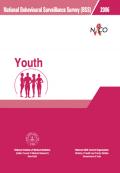
Resource | Publications,
Behavioural Surveillance Surveys (BSS) are internationally standardised tools used for understanding the knowledge, attitude, and behaviour of populations. Undertaking BSS among youth is an important effort by NACO and UNICEF to monitor changes in behavioural aspects of young people who are vulnerable to HIV infection.
The study aims to provide a baseline for the interventions among the young people supported by NACO and UNICEF. The study will be repeated periodically for trend analysis, which will indicate the impact of the interventions as well as generate invaluable information about the behaviour and lifestyle of young people in the country.
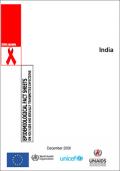
Resource | Fact Sheets,
The estimates and data provided in the following tables relate to 2005 unless stated otherwise. These estimates have been produced and compiled by UNAIDS/WHO.
The evidence of HIV was first documented in Chennai in southern India in 1986. From then until March 2004, 68,809 AIDS cases have been reported to the National AIDS Control Organization. Heterosexual route is the predominant mode of transmission, followed by injecting drug use.
Nationwide, annual HIV sentinel surveillance (HSS) was started in 1998 and so far six rounds have been completed. The numbers of ANC sentinel sites have increased considerably over the years, however, the vulnerable population groups such as MSMs, IDUs and CSWs remain largely underrepresented.
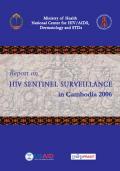
Resource | Publications,
In Cambodia, sentinel surveillance data have been used to estimate national HIV prevalence and project trends in HIV and AIDS incidence and mortality. In 2006, Cambodia conducted its tenth round of HIV sentinel surveillance (HSS) in 22 of its 24 provinces and municipalities. The two sentinel groups surveyed were brothel-based female sex workers (FSWs) and pregnant women attending antenatal care (ANC) clinics.

Resource | Fact Sheets,
As gender equality improves, the prevalence of violence against women is lower. Data available shows the inverse relationship between gender equality and violence by an intimate partner. This is borne out for both physical and sexual forms of abuse. Countries with greater equality between women and men tend to have lower levels of violence against women, based on the leading global indices for gender equality. These measure equality based on: life expectancy; sex ratio at birth; adult literacy; primary, secondary and tertiary education enrollment rates; participation in the formal labour force; estimated earned income; wage equality; shares of seats in legislative, ministerial and senior political positions; and shares in management and technical positions.
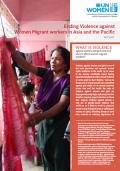
Resource | Fact Sheets,
Violence against women and girls is one of the most pervasive and systemic human rights violations in the world. Up to seven in ten women worldwide report having experienced physical and/or sexual violence at some point in their lifetime, and up to 50 percent of sexual assaults are committed against girls under 16. In several countries across Asia and the Pacific the rates of violence against women and girls are disproportionately high, indicating that the situation requires urgent attention in these two regions.
Violence against women is 'any act of gender-based violence that results in, or is likely to result in, physical, sexual or psychological harm or suffering to women [or girls], including threats of such acts, coercion or arbitrary deprivation of liberty, whether occurring in public or in private life.'
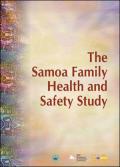
Resource | Publications,
The Samoa Family Health and Safety Study (SFHSS) is a component of the larger Pacific Multi-site Study of the Effects of Violence Against Women on Family Health and Safety, which is a joint research initiative of the Secretariat of the Pacific Community (SPC) and the United Nations Population Fund (UNFPA).
The Multi-site study follows the methodology of the World Health Organization (WHO) Multicountry Study of Women's Health and Domestic Violence, and uses questionnaires based on those developed by WHO.
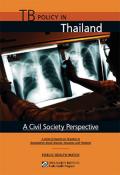
Resource | Publications,
On the first World TB Day of the new millennium, ministerial representatives of the 20 countries carrying 80 percent of the global tuberculosis (TB) burden adopted the Amsterdam Declaration to Stop TB. By adopting the Declaration, these governments pledged to take bold new steps in addressing the TB epidemic in their countries and affirmed their commitment to “implement, monitor and evaluate” their national TB programs according to the TB con- trol strategy recommended by the World Health Organization (WHO).
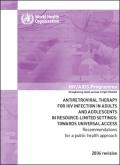
Resource | Tools,
This publication is intended to serve as a reference tool for countries with limited resources as they develop or revise national guidelines for the use of ART in adults and postpubertal adolescents. The material presented takes updated evidence into account, including new ART treatment options, and draws on the experience of established ART scaleup programmes. The simplified approach, with evidence-based standards, continues to be the basis of WHO recommendations for the initiation and monitoring of ART.
The guidelines are primarily intended for use by national and regional HIV programme managers, managers of nongovernmental organizations delivering HIV care services, and other policy-makers who are involved in the scaling up of comprehensive HIV care and ART in resource-limited countries. The comprehensive, up-to-date technical and clinical information on the use of ART, however, also makes these guidelines useful for clinicians in resource-limited settings. The recommendations contained in these guidelines are made on the basis of different levels of evidence from randomized clinical trials, high-quality scientific studies, observational cohort data and, where insufficient evidence is available, expert opinion.
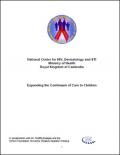
Resource | Publications,
Approximately 123,000 Cambodians aged 15-49 are estimated to be living with HIV. An additional 12,000 (approximately 10% of the total) are children under the age of 15.2 The provision of antiretroviral treatment (ART) to people living with HIV/AIDS (PLHA) is a relatively new phenomenon in Cambodia. The National Strategic Response to HIV was, until 2004, primarily focused on HIV prevention thought VCCT and health education. But the advent of high level funding from the Global Fund for AIDS, TB and Malaria (GFATM) has drawn attention to the need to expand and support ART services.
The Cambodian National Strategic Response to HIV/AIDS has a clearly articulated Continuum of Care (CoC) to provide HIV treatment to PLHA. The CoC has a particularly strong community component within it, but children with HIV are not currently encompassed within this structure. The Clinton Foundation HIV/AIDS Initiative is committed to supporting the government of Cambodia to expand pediatric HIV/AIDS care in Cambodia as outlined in the Memorandum of Understanding between CHAI and the Ministry of Health. This concept paper is a first step to try and achieve that goal.
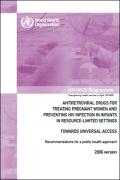
Resource | Guidelines,
These revised guidelines on ARV Drugs for Treating Pregnant Women and Preventing HIV Infection in Infants in Resource-Limited Settings are consistent with, and aim to support, the Call to Action Towards an HIV-free and AIDS-free Generation. The document is one of a trilogy of guidelines published at the same time which provide recommendations developed by WHO and its partners in support of the public health approach to antiretroviral therapy (ART) in resource constrained settings. It contains recommendations for the use of ARV drugs in pregnant women for their own health and for preventing HIV infection in infants and young children, and a summary of the scientific rationale for the recommendations. In particular, the publication aims to provide guidance to assist national ministries of health in the provision of ART for pregnant women with indications for treatment, and in the selection of ARV prophylaxis regimens to be included in programmes to prevent mother-to-child transmission (MTCT), taking into account the needs and constraints on health systems in various settings.





